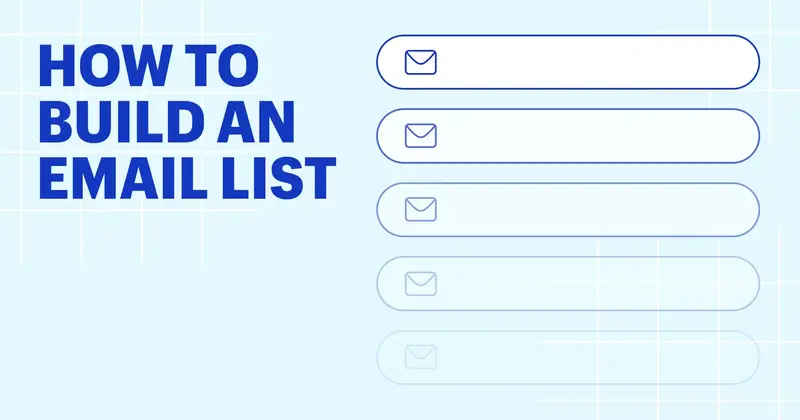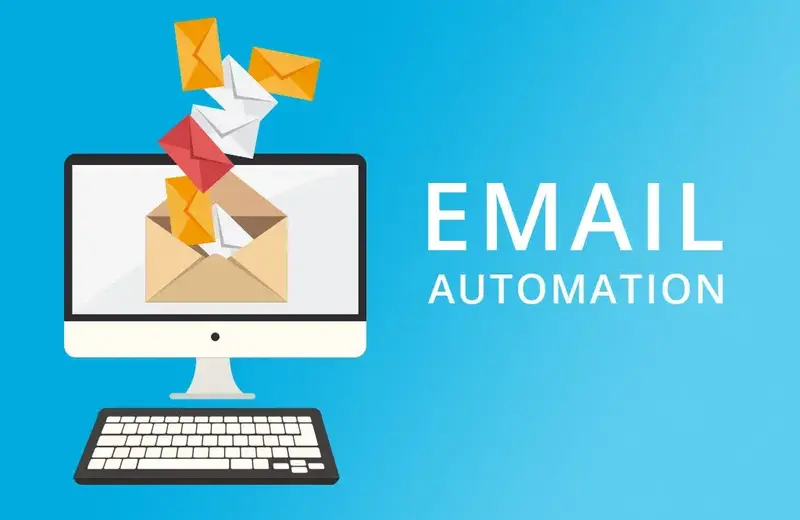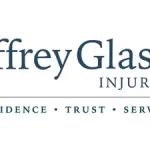Mortgage email marketing is the strategy mortgage brokers, lenders, and real estate professionals use to connect with customers and maintain relationships. Email marketing can be a cost-effective and efficient way to reach your target audience, promote your services, and provide valuable information. Mortgage email marketing can be a highly effective way to connect with potential borrowers and nurture client relationships. By building a quality email list, personalizing your messages, providing valuable content, and optimizing your campaigns, you can increase your chances of success in a competitive mortgage market. Use these tips to create engaging, informative, and compliant email campaigns that help you achieve your business goals.
In this article, we will examine what email marketing is, understanding your audience for mortgage email marketing, building a high-quality email list, crafting engaging mortgage email content, email automation and drip campaigns, analytics and tracking, mortgage email marketing compliance and legal considerations, email design and mobile responsiveness and finally the top companies that provide the mortgage email marketing.
- What is Email Marketing?
- Understanding Your Audience for Mortgage Email Marketing
- Building a High-Quality Email List
- Crafting Engaging Mortgage Email Content
- Email Automation and Drip Campaigns
- Mortgage Email Marketing Analytics and Tracking
- Mortgage Email Marketing Compliance and Legal Considerations
- Email Design and Mobile Responsiveness
- Conclusion
- Mortgage Email Marketing FAQ
What is Email Marketing?
Email marketing is a digital marketing campaign strategy that involves sending emails to a group of people or subscribers with the goal of promoting products services, or building relationships with customers. It is a powerful tool for businesses and organizations to communicate with their audience, engage with potential and existing customers, and drive various marketing objectives. Here are some key aspects of email marketing:
- Building and Managing Email Lists: Email marketing starts with creating and maintaining an email list or subscriber base. This list typically consists of individuals who have opted in to receive emails from a particular business, often through sign-up forms on websites, during purchases, or at events.
- Email Campaigns: Email campaigns involve sending targeted and relevant content to the subscribers on your list. These modern email marketing campaigns can take various forms, such as newsletters, promotional emails, transactional emails, and more.
- Compliance: Email marketing is subject to various regulations, such as the CAN-SPAM Act in the United States and the General Data Protection Regulation (GDPR) in Europe. Businesses must comply with these regulations to avoid legal issues and maintain the trust of their subscribers.
- Personalization: Effective email marketing often includes personalization, tailoring the content and regular email marketing messages to the specific needs and interests of individual subscribers. Personalization can improve engagement and conversion rates.
- Automation: Many email marketing platforms offer automation features, allowing businesses to set up and schedule emails in advance. This includes automated welcome emails, drip mortgage marketing campaigns, and other triggered emails based on subscriber actions or behavior.
- Segmentation: Segmenting your email list based on various criteria, such as demographics, purchase history, or engagement level, allows for more targeted and relevant communication. This can increase the effectiveness of email marketing efforts.
Email marketing is a cost-effective and versatile tool for businesses of all sizes. When used strategically, it can help foster customer loyalty, boost sales, and strengthen the overall online presence of a brand. However, it’s essential to approach email marketing ethically and provide value to subscribers to maintain a positive relationship and achieve long-term success.
Retail and E-commerce Email Marketing
E-commerce businesses often rely heavily on email marketing for promoting mortgage products, special offers, and sales. An ecommerce email marketing agency can provide tailored services to boost your online sales and revenue.
Outsource Email Marketing for Efficiency
For businesses with limited resources, outsourcing email marketing can be a smart move. Many email marketing vendors and agencies specialize in managing email campaigns. These experts can handle everything from email marketing reporting to integration with other marketing systems.
Choosing the Right Email Marketing Service
When it comes to email marketing services, there are plenty of options available. Finding the best email campaign service for your business is crucial. Some of the factors to consider when choosing a service include the size of your email list, your budget, and the features you require. Affordable email marketing options, like free email marketing platforms, can be ideal for small businesses and startups. Services such as benchmark email marketing can offer customizable solutions.
Creating an Effective Email Marketing Campaign
To run a successful email marketing campaign, you’ll need a effective email marketing strategy strong mortgage marketing plan in place. Start by defining your right mortgage marketing campaign’s goals, whether it’s promoting a new product, generating leads, or simply maintaining customer engagement. Next, create engaging content and personalized email marketing messages tailored to your audience. Email marketing campaign management services can help streamline this process, making it more efficient and effective.
Maximizing Results
To get the most out of your email marketing efforts, it’s essential to keep track of your email marketing products‘ performance. Regularly reviewing email marketing reporting and adjusting your email strategy based on the data can help improve your results.

Email marketing is a powerful tool for businesses of all sizes, offering various email marketing programs and solutions. Whether you’re a small business owner looking for the cheapest email marketing options or a larger enterprise in need of a comprehensive email marketing platform, there’s a service that can cater to your specific needs. By implementing the right email marketing strategy and utilizing available services, you can harness the potential of email marketing for lead generation, mortgage advertising, and business growth. Don’t miss out on this valuable opportunity to connect with your audience and drive business success through email marketing.
Understanding Your Audience for Mortgage Email Marketing
Understanding your audience is crucial for effective mortgage email marketing. By tailoring your email campaigns to the specific needs and preferences of your target audience, you can increase engagement and conversions. Here are some key steps to understand your audience for mortgage email marketing:
- Define Your Target Audience: Identify who your ideal mortgage customers are. Consider factors like age, income, credit score, location, and whether they are first-time homebuyers or refinancing their homes. Create buyer personas to help visualize your target audience.
- Conduct Market Research: Use market research to gather data on your target audience. Analyze industry reports, market trends, and competitor mortgage marketing strategies to gain insights into the preferences and behaviours of potential mortgage customers.
- Segment Your Email List: Divide your marketing email list into segments based on demographics, interests, and behaviours. This segmentation allows you to send more personalized and relevant content to different groups within your audience.
- Gather Data: Collect data from your existing customers and leads. This could include information on their stage in the home-buying process, their credit score, the type of property they are interested in, and their preferred mortgage terms.
- Analyze Website and Email Engagement: Use analytics tools to monitor how your audience interacts with your website and effective marketing campaign. Track metrics such as open rates, click-through rates, and conversion rates to understand what content resonates with your audience.
- Surveys and Feedback: Consider sending surveys to your email list to gather direct feedback. Ask about their pain points, preferences, and what information they find most valuable in the mortgage process.
- Buyer’s Journey Mapping: Create a buyer’s journey map to understand the different stages your audience goes through when considering a mortgage email marketing. Tailor your emails to address their specific needs and questions at each stage.
- A/B Testing: Experiment with different email subject lines, content formats, and call-to-action (CTA) buttons to determine what resonates best with your audience. A/B testing helps refine your mortgage email marketing strategy.
- Compliance: Ensure your emails comply with mortgage and financial regulations. Providing accurate and transparent information is essential for building trust with your audience.
- Educational Content: Mortgage email marketing can be an excellent opportunity to educate your audience. Offer tips, guides, and resources related to the mortgage email marketing process to help your recipients make informed decisions.
By understanding your audience and tailoring your mortgage email marketing efforts accordingly, you can build stronger relationships with potential borrowers, increase your chances of conversion, and ultimately grow your business.
Building a High-Quality Email List
Building a high-quality email list is the cornerstone of effective mortgage email marketing. A well-curated list not only ensures that your messages reach the right audience but also enhances engagement and conversion rates. A high-quality list consists of engaged, interested, and relevant subscribers who are more likely to open your emails and take desired actions.

Here are some steps to build a high-quality email list:
- Use Opt-In and Permission-Based Methods: Collect email addresses only from individuals who have given explicit consent to receive emails from you. This can be done through sign-up forms, checkboxes, or double opt-ins where subscribers confirm their intent to join your list.
- Create Compelling Sign-Up Forms: Design easy-to-use and visually appealing sign-up forms on your website, landing pages, and social media channels. Clearly communicate the value of subscribing to encourage more sign-ups.
- Segment Your List: As you grow your list, segment subscribers based on their interests, preferences, and behaviours. This allows you to send more targeted and relevant content, increasing engagement.
- Leverage Social Media: Promote your email sign-up forms on your social media profiles and in your posts. Encourage your followers to join your list by highlighting the benefits of being on it.
- Use Referral Programs: Encourage your current subscribers to refer friends and family by offering rewards or discounts for successful referrals. This can help you expand your list of contacts who are likely to be interested in your content.
- Host Webinars and Events: Hosting webinars or virtual events can be a great way to collect email addresses. Require registration for these events, and use the collected data to grow your list.
- Optimize Your Website for Conversions: Make sure your website is user-friendly and that your email sign-up forms are prominently displayed on relevant pages. A/B test different form placements and designs to optimize conversion rates.
- Content Marketing: Produce high-quality content that sparks curiosity in your target audience. Include email sign-up forms within blog posts, articles, and other content to capture interested readers.
- Implement a Re-Engagement Campaign: Periodically, send re-engagement mortgage marketing campaigns to inactive subscribers. If they don’t respond or re-engage, consider removing them from your list to maintain list quality.
- Monitor List Health: Regularly check and maintain the health of your email list by removing invalid, bounced, and inactive email addresses. This helps to keep your list up-to-date and responsive.
Building a high-quality email list takes time and effort, but it’s essential for a successful mortgage email marketing strategy. A smaller, engaged list is often more valuable than a large, unengaged one, as it is more likely to lead to conversions and positive customer relationships.
Crafting Engaging Mortgage Email Content
Crafting engaging mortgage email content is essential for capturing your audience’s attention, providing value, and ultimately driving conversions. Mortgage-related topics can be complex and often evoke strong emotions, so it’s important to create content that is informative, empathetic, and compelling. Here are some email marketing tips to help you create engaging mortgage email content:
- Solve Problems: Identify common problems or pain points your audience faces and offer solutions in your emails. Whether it’s tips for improving credit scores or guidance on the mortgage email marketing application process, showing you can help ease concerns.
- Clear and Relevant Subject Lines: The subject line is the first thing recipients see. Make it clear, concise, and relevant to the email’s content. Engaging subject lines can increase your open rates.
- Compelling Headlines and Preview Text: Your email’s headline and preview text should grab the reader’s attention and provide a preview of the email’s content. Use compelling language to entice readers to open the email.
- Call to Action (CTA): Clearly define what action you want the recipient to take, whether it’s to contact you for a consultation, download a guide, or explore available mortgage email marketing options.
- Personalization: Use the recipient’s name and any other relevant data you have to personalize your emails. Personalization can significantly improve engagement.
- Visual Content: Use visuals like images, charts, and infographics to break up text and make your emails more visually appealing. Visual content can help convey complex information more easily.
- Mobile Optimization: Ensure that your emails are mobile-responsive. Many people check their emails on mobile devices, and a poorly formatted email can deter engagement.
- A/B Testing: Experiment with different content, layouts, subject lines, and CTAs to see what resonates best with your audience. Use A/B testing to refine your email content over time.
- Engage in Two-Way Communication: Encourage recipients to reply to your emails with questions or concerns. Building a direct line of communication can foster a deeper connection.
Remember that every email you send should provide value to your audience. Whether it’s information, solutions to problems, or emotional support, the goal is to build a relationship and trust with your subscribers while guiding them through the mortgage email marketing process.
Sample Email Campaign Structure for Mortgage Professionals
Here’s a simplified table to illustrate a possible email campaign structure for a mortgage broker:
| Week | Audience Segment | Email Content Type | Objective |
| 1 | All Subscribers | Welcome Email | Introduce services, set expectations |
| 2 | First-time Home Buyers | Educational Content | Explain mortgage basics |
| 3 | Potential Refinancers | Market Update | Highlight benefits of refinancing now |
| 4 | All Subscribers | Testimonial Story | Build trust and showcase success stories |
| 5 | All Interested Leads | Personal Consultation CTA | Encourage booking a consultation |
This table provides a basic framework, but your campaign might need adjustments based on specific goals and audience interactions. Moreover, creating a mortgage industry news email campaign allows you to educate your current and potential clients and referral realtors about changes that may be occurring while also highlighting your knowledge and expertise in the industry.
Email Automation and Drip Campaigns
In the ever-evolving landscape of digital mortgage marketing, email automation and drip mortgage marketing campaigns have emerged as indispensable tools for businesses looking to connect with their audience in a personalized and effective manner. From automating responses to specific user actions to orchestrating thoughtfully sequenced email series, this comprehensive resource will equip you with the knowledge and digital marketing strategies to supercharge your mortgage email marketing efforts and build enduring relationships with your subscribers.
Email automation and drip mortgage marketing campaigns are powerful tools in mortgage email marketing that allow you to send targeted, timely, and relevant messages to your subscribers. These automated sequences can help nurture leads, engage customers, and improve your overall mortgage marketing strategy.
Email Automation
Email automation has revolutionized the way businesses engage with their audience in the digital age. This powerful marketing tool empowers organizations to streamline their communication efforts, deliver personalized messages at scale, and nurture customer relationships more effectively. By automating the sending of emails triggered by specific actions or events, email automation not only saves time but also ensures that the right content reaches the right people at the right moment.

Email automation involves using pre-set rules and triggers to send emails automatically. Here are some important aspects of email automation:
- Lead Nurturing: Automation is used to nurture leads over time. It can deliver targeted content, address pain points, and guide mortgage leads through the sales funnel.
- Trigger-Based Emails: Automation can be triggered by specific actions or events, such as a user signing up for your newsletter, making a purchase, or abandoning a shopping cart.
- Welcome Series: A common automation is a welcome series where new subscribers receive a sequence of emails introducing your brand, products, or services.
- Abandoned Cart Emails: E-commerce businesses often use automation to send reminders to customers who have items in their cart but haven’t completed the purchase.
- Behaviour-Based Triggers: Emails can be triggered by user behaviour, such as clicking on a specific link in a previous email, visiting a particular webpage, or not opening emails for a defined period.
- Personalization: Automation allows for personalized content based on user data, ensuring that emails are highly relevant to the recipient.
- Timing and Frequency Control: You can schedule emails to be sent at specific times or intervals to optimize engagement.
Email automation is a mortgage marketing game-changer in the world of digital marketing. It empowers businesses to deliver timely, relevant, and personalized messages that resonate with their audience. From welcome series that greet new subscribers to abandoned cart reminders that recover potential sales and from nurturing leads through drip campaigns to automating event-triggered emails, this technology offers unparalleled efficiency and effectiveness. By leveraging email automation, you can build stronger connections, drive conversions, and achieve marketing success in an ever-evolving digital landscape.
Drip Campaigns
Drip campaigns, also known as automated email sequences, have emerged as a dynamic and invaluable tool in the arsenal of digital marketing. These successful mortgage marketing campaigns allow businesses to cultivate relationships, educate customers, and guide leads through a carefully orchestrated series of emails, all on autopilot. Drip campaigns are a type of email automation that sends a series of pre-written, scheduled emails to a specific list or segment. Here are some key elements of drip campaigns:
- Content Sequencing: Drip campaigns can deliver content in a specific order, allowing you to tell a story or educate recipients progressively.
- Progressive Profiling: As recipients engage with the drip mortgage marketing campaign, you can gather more information about their interests and preferences, allowing for more personalized content.
- Event-Based Drips: You can create drip campaigns for various events, such as onboarding new customers, re-engaging inactive subscribers, or delivering a course.
- Segmentation: Drip campaigns can be highly targeted by segmenting your list based on demographics, behaviour, or preferences.
- A/B Testing: You can test different elements of your drip mortgage marketing campaign, such as subject lines, content, or sending times, to optimize performance.
- Monitoring and Optimization: Continuously analyze the performance of your drip campaigns and adjust them as needed to improve results.
Drip campaigns are a cornerstone of modern mortgage email marketing, offering a systematic and highly effective approach to nurturing leads and engaging with your audience. With consistent monitoring, testing, and optimization, you can harness the full potential of drip campaigns to achieve your marketing objectives, strengthen customer relationships, and drive lasting success in the ever-evolving digital landscape.
Both email automation and drip campaigns can save time, increase engagement, and lead to higher conversion rates. By delivering the right message to the right person at the right time, you can enhance your overall mortgage email marketing strategy and build stronger relationships with your audience.
Mortgage Email Marketing Analytics and Tracking
Analytics and tracking are essential components of any digital marketing strategy, including mortgage email marketing. These tools and techniques provide insights into the performance of your email campaigns, helping you measure success, make data-driven decisions, and optimize your future mortgage marketing efforts. Here’s an overview of analytics and tracking in mortgage email marketing:
- Open Rate: The open rate measures how many recipients have opened your email. It’s a key metric for understanding the initial engagement with your content. A higher open rate typically indicates a more engaging subject line and sender name.
- Click-Through Rate (CTR): CTR tells you how many people clicked on links within your email. It’s an essential metric for gauging the effectiveness of your email content and calls to action (CTAs).
- Conversion Rate: The conversion rate measures how many recipients completed a desired action after clicking on a link in your email. This could be making a purchase, signing up for a webinar, or filling out a lead form.
- Bounce Rate: This rate indicates the percentage of emails that couldn’t be delivered to the recipient’s inbox. There are two sorts of bounces: “soft” bounces (temporary issues) and “hard” bounces (permanent issues). Reducing the bounce rate is essential for maintaining a high email deliverability rate.
- List Growth Rate: This rate tracks how quickly your email list is growing. A healthy list should consistently acquire new subscribers while maintaining a low unsubscribe rate.
- Email Client and Device Usage: Understanding which email clients and devices your audience uses can help you optimize your email design and layout for better compatibility.
- Email Engagement Over Time: Tracking how engagement with your emails changes over time can help you identify trends and seasonality in your audience’s behaviour.
- A/B Testing Results: Analyzing the results of A/B tests on various email elements (subject lines, content, images, CTAs) provides insights into what resonates best with your audience.
- Website and Sales Tracking: Integrate your email campaigns with website analytics and sales data to trace the impact of mortgage email marketing on website traffic, conversions, and revenue.
- Spam Complaints: Monitoring spam complaints can alert you to potential issues with email content, frequency, or list quality. High spam complaint rates can harm your email deliverability.
- Return on Investment (ROI): Calculate the financial impact of your email campaigns, taking into account revenue generated versus costs incurred.
- Unsubscribe Rate: The unsubscribe rate shows the percentage of recipients who chose to opt out of your email list. It’s important to monitor this metric to ensure you’re not overwhelming subscribers with irrelevant or too frequent emails.
To effectively use analytics and tracking, it’s crucial to set clear goals, regularly analyze data, and make data-driven adjustments to your mortgage email marketing strategy. These insights can help you refine your content, timing, segmentation, and other aspects to improve the effectiveness of your email campaigns.
Mortgage Email Marketing Compliance and Legal Considerations
Mortgage email marketing, like any form of email marketing, requires strict compliance with legal regulations to protect both your mortgage business and your audience. The mortgage email marketing industry, in particular, is subject to numerous regulations due to its financial nature.

Here are some compliance and legal considerations specific to mortgage email marketing:
- Consent and Opt-In:
- Obtain explicit consent from individuals before sending mortgage-related emails.
- Be transparent about what they can expect to receive and how often.
- Include a clear and easy-to-use opt-out or unsubscribe mechanism in every email.
- CAN-SPAM Act (US): The CAN-SPAM Act is a fundamental legal framework for mortgage email marketing in the United States. It mandates that your mortgage-related emails must have accurate sender information, clear subject lines, and a functional opt-out mechanism. Ensure that you adhere to CAN-SPAM requirements, especially if you’re sending emails to a US audience.
- Mortgage-Specific Regulations: Mortgage email marketing may be subject to additional regulations, such as the Truth in Lending Act (TILA) and the Real Estate Settlement Procedures Act (RESPA). Be aware of these laws and ensure your emails align with their requirements, which may include providing certain disclosures and information.
- Mortgage Licensing and Registration: If your mortgage email marketing involves mortgage loan origination or brokerage, ensure that your business and any applicable personnel are properly licensed and registered as required by law.
- Record-Keeping: Maintain detailed records of consent, opt-outs, and other relevant data for compliance purposes.
- Secure Data Handling: Mortgage-related emails often contain sensitive financial and personal information. Ensure that your email communications and data handling practices meet industry-standard security and encryption protocols to protect this information.
- Comply with State Laws: Many states in the US have specific regulations related to mortgage email marketing and financial services. Ensure that your mortgage email marketing practices align with state laws where your audience resides.
- Anti-Discrimination Laws: Mortgage email marketing emails should never discriminate against any individual or group based on factors like race, gender, or religion. Compliance with fair lending laws is crucial.
- Financial Promotions: Be cautious with financial or mortgage-related claims and offers in your emails. Avoid making false or misleading statements.
- Privacy Policies: Your privacy policy should be clear about how you collect, use, and protect personal and financial information.
- Test and Review: Regularly review and test your mortgage email marketing campaigns to ensure compliance and accuracy. Seek legal counsel to assess the legality of your email content and practices.
Compliance with these regulations not only helps you avoid legal issues but also builds trust with your audience. Mortgage decisions are significant and sensitive, and potential customers need to trust that your communication and practices are reliable and secure. Always stay informed about the latest regulations, as the legal landscape can change, and seek professional advice when needed to ensure compliance in your mortgage email marketing efforts.
Email Design and Mobile Responsiveness
Email design and mobile responsiveness are critical components of a successful mortgage email marketing strategy. With the increasing use of mobile devices, ensuring that your emails are visually appealing and functional on various screen sizes is essential. Here are key considerations for effective email design and mobile responsiveness:
- Responsive Design: Ensure your email template is responsive, meaning it adapts seamlessly to different screen sizes, including desktops, tablets, and mobile devices. This is crucial as a significant portion of users access emails on mobile devices.
- Single-Column Layout: Consider using a single-column layout for better readability on mobile devices. This simplifies the design and ensures content is presented in a linear, easy-to-follow manner.
- Font Size and Legibility: Use legible fonts and maintain an appropriate font size for both desktop and mobile users. Small text may be difficult to read on mobile devices.
- Preview Text: Craft compelling preview text that complements your subject line and encourages recipients to open your email.
- Use Pre-Header Text: Pre-header text is the snippet of text that appears after the subject line in an email preview. Use this space wisely to provide additional context or encourage opens.
- High-Quality Images: If you include images in your emails, ensure they are high-quality and optimized for quick loading, even on slower mobile networks.
- Alt Text for Images: Include descriptive alt text for images to ensure that even if images are not displayed, recipients still understand the content.
- Clear Call-to-Action (CTA): Your CTA should be clear, prominently displayed, and easy to tap on mobile devices. Ensure that buttons are appropriately sized for touch screens.
- Short Loading Time: Optimize your email for quick loading times. Large file sizes or complex designs may lead to slower loading, especially on mobile devices.
- Brand Consistency: Maintain consistency with your brand elements, such as colours and logos, to reinforce brand recognition.
- Test Across Devices: Test your email on various devices and email clients to ensure consistent rendering. Consider using email testing tools to preview your emails in different environments.
By prioritizing responsive design and user mortgage experience, your email campaigns are more likely to engage and convert recipients across various devices. Regularly analyze performance metrics, gather user feedback, and adapt your email design strategy to evolving trends and technologies.
Conclusion
In conclusion, effective mortgage email marketing is a dynamic and multifaceted strategy that requires a careful balance of personalized communication, informative content, and strategic timing. By understanding the unique needs and preferences of your target audience, you can craft compelling messages that resonate with potential homebuyers. Furthermore, leveraging data analytics and segmentation techniques allows for a more tailored approach, increasing the likelihood of engagement and conversion. Remember, building trust and providing valuable insights are key components of a successful mortgage email marketing campaign, ultimately fostering long-lasting relationships with clients and establishing your brand as a trusted partner in their homeownership journey.
Mortgage Email Marketing FAQ
When venturing into mortgage email marketing, it’s crucial to have a solid grasp of best practices and common questions to maximize your campaign’s effectiveness. This FAQ section is designed to provide you with clear, concise answers to frequently asked questions about mortgage email marketing strategies. Whether you’re new to the mortgage industry or looking to refine your existing mortgage email marketing efforts, this guide will equip you with the knowledge to launch successful email campaigns that convert leads into clients.
What strategies can I implement to skyrocket savings through mortgage email marketing?
Implement automation for efficiency, optimize email content for conversions, leverage data analytics for insights, and focus on nurturing long-term customer relationships.
What are the different types of mortgage emails I can utilize in my campaigns?
Utilize emails for new listings, industry updates, client testimonials, educational content, and promotional offers to engage your audience effectively.
How can I increase ROI and engagement through mortgage email marketing efforts?
Focus on delivering valuable content, optimizing mobile responsiveness, A/B testing campaigns for effectiveness, personalizing messages, and nurturing leads through strategic follow-ups.
What is the best day and time to send mortgage-related emails?
Typically, mid-week days like Tuesday through Thursday mid-morning are optimal for sending business emails.
What is the best time to send mortgage-related emails?
Late mornings during weekdays can see higher open rates, but it’s essential to test this with your audience.






















